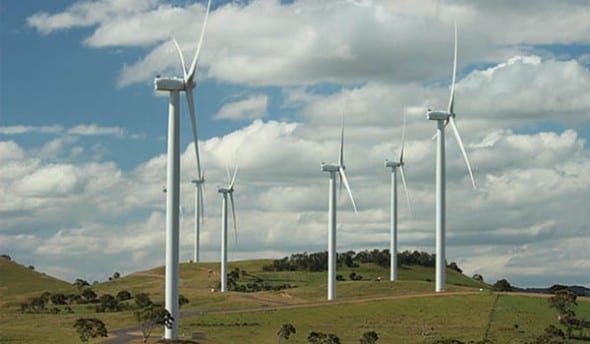State and territory environment ministers this week unanimously rejected a push by the Federal Coalition government and cross-bench Senators to regulate noise from wind turbines in the same way as pollution from coal fired generators, and to introduce uniform planning rules for wind farms.
The proposals were presented by Federal environment minister Greg Hunt at a meeting of state and territory ministers on Wednesday. They were part of a deal struck between the Coalition and the cross-bench Senators who oppose wind farms, and want tighter rules on their development.
The cross-benchers wanted wind farm “noise” to be treated in the same way as the emission of particulates from coal mines and power plants, smoke stacks from factories and vehicle exhausts, and included in the suite of National Environment Protection Measures.
The states rejected this unanimously, along with a proposal presented by Hunt for wind farm guidelines to become national-based rather than state-based, another recommendation from the draft release of the Senate inquiry into wind farms chaired by anti-wind Senator John Madigan.
All the states insisted that planning was a matter for the states, and were not interested.
Cross-bench Senators such as Madigan and David Leyjonhelm are virulent opponents of wind farms, as are Senators Bob Day and Nick Xenophon. The cross-benchers have been leading a Coalition supported wind inquiry which wants stricter measure on wind farms, if not stop them altogether.
The Coalition itself is no fan on wind farms. Prime Minister Tony Abbott says they are ugly, noisy and possibly a threat to health, and Treasurer Joe Hockey says they are “objectionable”, a view he has repeated often.
The Coalition has sought to stop the Clean Energy Finance Corporation from financing any wind farm developments, in a controversial move interpreted as an attempt to make it near impossible for the CEFC to fulfil its mandate.
Hunt said in a press release on Friday that the ministers did recognise the health impacts of airborne particles, and agreed to strengthen the reporting standards for particles (PM2.5 and PM10) in the National Environment Protection (Ambient Air Quality) Measure.
Full details of what they agreed on can be found here.









